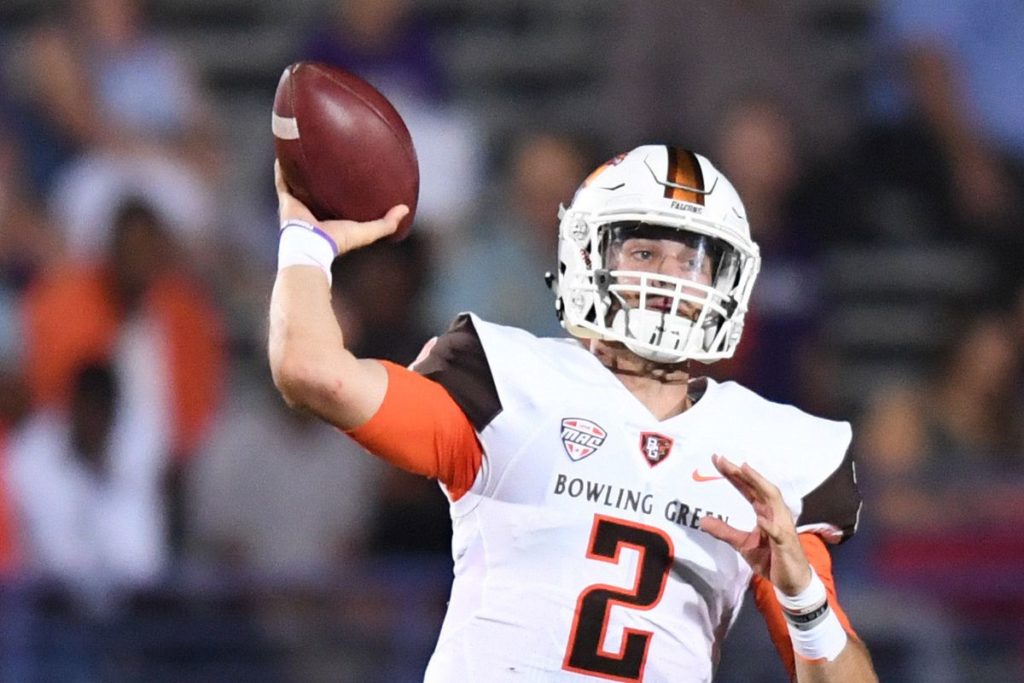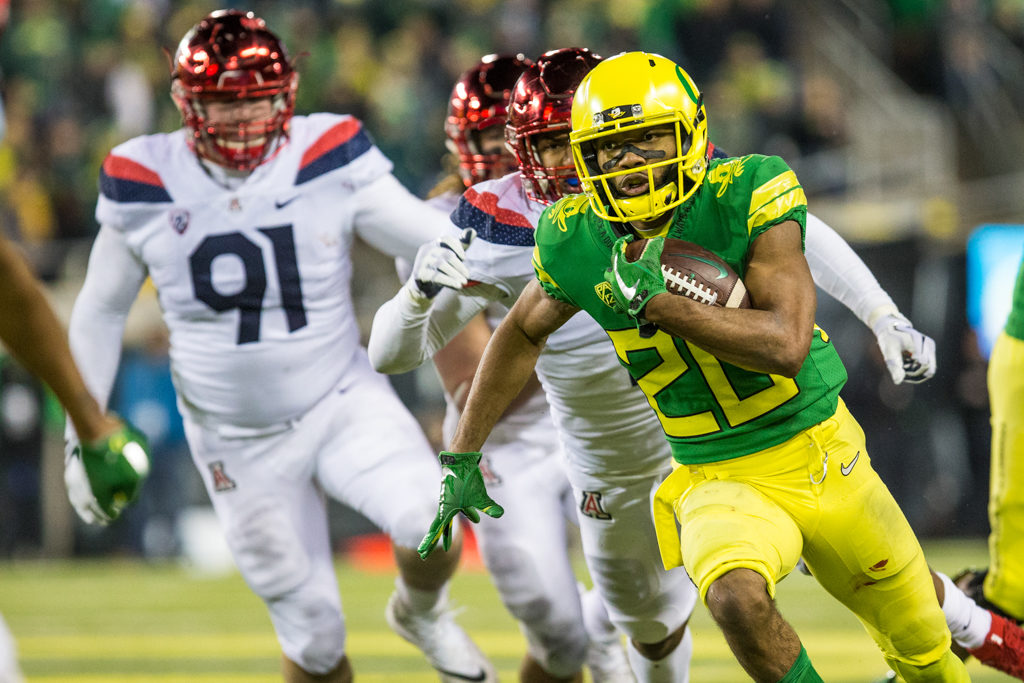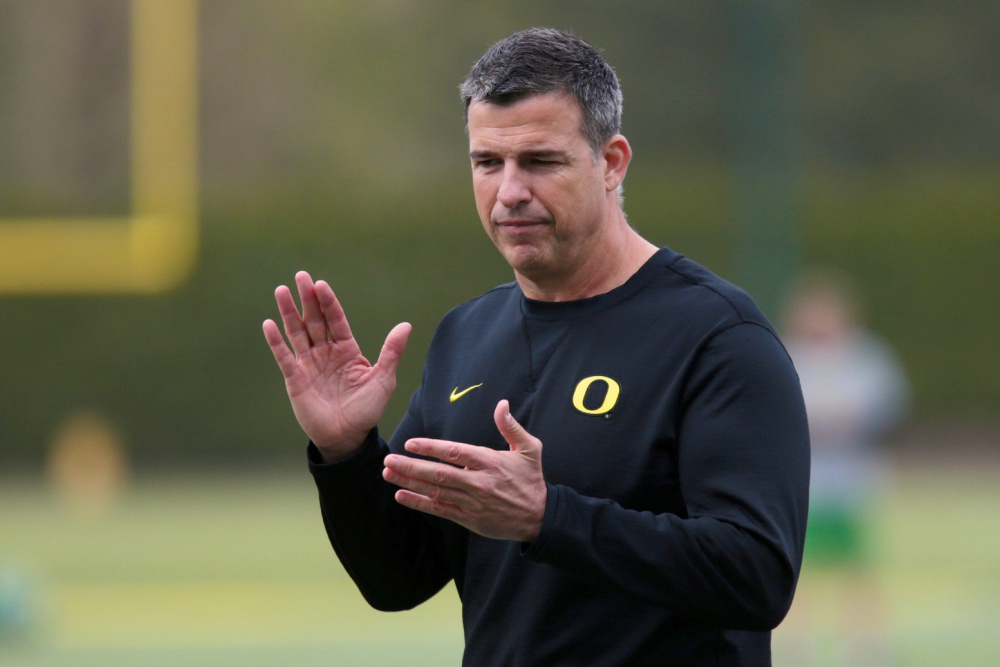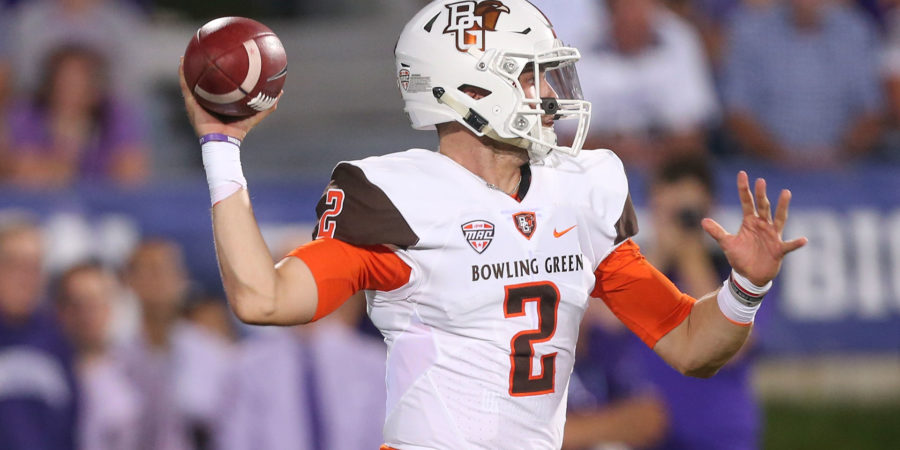With three non-Power 5 teams on Oregon’s non-conference schedule (including one FCS opponent in Portland State), compiling a list of keys to victory over the next few weeks for the Ducks may seem like a fruitless effort. And it very well might be, as Oregon has made a habit of drilling Group of Five and FCS opponents the past couple decades.
But as ESPN’s promos for the College Football Playoff annoyingly (yet truthfully) hammer home, “EVERY GAME COUNTS” in college football, and nobody is forgetting the events of Appalachian State-Michigan anytime soon.
With all that in mind, WFOD examines the keys to victory for Oregon in their season opening contest Saturday night versus Bowling Green at Autzen Stadium.

1. Don’t underestimate the Falcons’ passing attack
If you read Wednesday’s piece, you already know that Bowling Green has legit offensive skill talent, particularly through the air. After starting five games last season, sophomore quarterback Jarret Doege enters 2018 as one of the MAC’s top young quarterbacks. The younger brother of former Texas Tech quarterback Seth Doege (who also serves as the Falcons special teams coordinator and receivers coach), Doege comes from quality quarterbacking bloodlines. Last season, Doege turned in one of the most prolific seasons in school history for a true freshman quarterback, sparking the Falcons offense with 1,381 yards through the air and 12 touchdowns, in addition to completing 63.8 percent of his passes.
His top target is senior wide receiver Scott Miller; a 5-foot-11, 166-pound spark plug who is among the best receivers in the MAC. Flanking Miller is a pair of big bodied receivers in 6-foot-5 senior Deric Phouthavong and 6-foot-4 sophomore Quintin Morris. Additionally, running back Andrew Clair is a factor in the passing game, hauling in 13 receptions for 129 yards and two touchdowns out of the backfield en route to earning Third Team All-MAC honors as a true freshman a season ago. With the Ducks looking to rotate a pair of true freshmen in Verone McKinley and Kahlef Hailassie alongside sophomores Thomas Graham and Deommodore Lenoir at corner, look for the high-flying Falcon passing attack to try and take advantage. If Oregon can hold up here, it should significantly mitigate whatever real hopes Bowling Green has for springing the upset.

2. Get the ground game rolling early and often
With Royce Freeman no longer leading the Oregon rushing attack, the Ducks will be relying on senior Tony Brooks-James and a host of newbies at running back to continue the tremendous legacy the program has enjoyed at the position. Of the group at running back, Brooks-James is by far the most seasoned, having compiled 1,557 rushing yards and 14 rushing touchdowns over the course of his career. Between the other five scholarship players at the position in CJ Verdell, Cyrus Habibi-Likio, Taj Griffin, Darrian Felix, and Travis Dye, the group has combined for 1,030 career rushing yards and seven touchdowns. Though the overall play of Oregon’s stable of running backs in this game likely won’t determine the final outcome, it sure wouldn’t hurt to begin establishing depth and positive momentum as the team builds towards the start of Pac-12 play on September 22.

3. Deliver the knock out punch early
There’s absolutely no debating that Oregon is the more superiorly talented team. With that though, it’s incumbent that this team start fast and finish this game (for all intents and purposes) at or shortly after halftime. Yes, the Falcons were a 2-10 team a year ago. However, with a young quarterback on the come up and an offense around him that is rapidly improving, the longer Bowling Green hangs around and builds confidence, the more this game becomes a thing. After an uninspiring performance in a loss to Boise State in the Las Vegas Bowl, Oregon head coach Mario Cristobal and the Ducks should want nothing more than to purge that taste by pounding the season’s first opponent.

